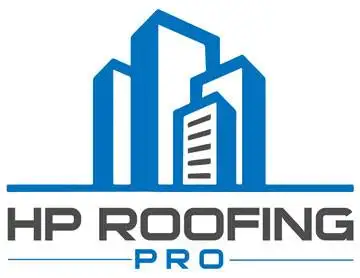Mon - Fri 7:00 am - 4:30 pm
601 South Palm Ave, Alhambra, CA 91803
Posted by thomas ferriere No Comments on Prepare Your Roof for a Natural Disaster Roofing
Prepare Your Roof for a Natural Disaster
California is well known for its beaches and beautiful weather, but we Californians also have to worry about devastating natural disasters. Only last March, severe storms brought strong winds, hail, and damaging tornadoes.
Wind, hail, and debris can take a heavy toll on your commercial roof. So how can you prepare and protect your building in the event of a natural disaster?
The first step is to evaluate the condition of your roof. The next step is to prepare it for storm season by following these steps.
Clear Your Gutters and Downspout
When was the last time you cleaned out your gutters or had them professionally cleaned? If it’s been a while, you should clear them of any debris prior to storm season.
This is a good time to make sure your gutters are in good condition as well. You want to rely on them to funnel water away from your roof and through your drainage system. Blocked gutters can cause water damage, as rainwater can seep into the siding.
Clear the Yard
If you know a storm is on the way, clean the yard and exterior areas around your business and remove any debris that could become potential projectiles in high winds. If you have a courtyard or common area, remove any furniture and decorations.
It’s also a good idea to trim any trees in the yard or have them professionally trimmed by a tree care company, especially if you have dead branches or limbs that hang near the roof.
Check Your Roof for Damage
Inspect your roof to look for any signs of damage. Common red flags include cracks and holes.
Check your flashings for damage or rust. Flashing is a thin metal material that protects your roof against leaks and water damage. It’s installed along openings in a roof, such as around gutters and chimneys.
Check the Underside of Your Roof
Prior to any bad weather, it’s a good idea to look at the underside of your roof. Check for any cracks that allow light in along the roof’s ceiling and walls.
Leaks that come through small cracks can result in thousands of dollars in water damage.
If you can’t check the interior of your commercial roof, call for a professional inspection.
Contact a Roofing Contractor for Repairs
If you notice any damage or want a roof inspection, you need to call a commercial roofing company.
Inspecting the roof yourself can be dangerous, so if you feel uncomfortable on a ladder, call for an inspection. A professional roofer will come to take a look and determine if your roof needs any repairs prior to storm season.
You can look for damage from the ground, but a professional knows what signs of wear and tear can cause problems.
What if your commercial roof needs repairs or replacement? It’s a good idea to have an inspection performed well before storm season in the event you need a roof replacement. After all, you don’t want to deal with water damage in your building.
Important repairs include replacing missing or damaged shingles, rusted or damaged flashing, physical roof damage, and mold. In some cases, you may need to replace the roof entirely, especially if it’s older.
The sooner you schedule repairs or a replacement, the better for your business.
Create a Maintenance Plan
Do you have a commercial roof maintenance plan for the storm season? If not, now is a great time to make one.
Your maintenance plan will vary depending on the roofing material you have. For instance, if you have metal roofing on your building, you’ll need regular inspections to look for any standing water, as this can cause corrosion.
Your plan should also include clearing the gutters and drains, scheduling repairs, and clearing debris from the roof. It’s also a good idea to plan for roof inspections about twice a year. Inspections can detect minor problems and address them before they end up becoming major repairs.
Check Your Commercial HVAC System
A lot of commercial buildings have HVAC equipment on the roof. Unfortunately, roof-mounted HVAC equipment is also at risk during storms and other natural disasters.
You’ll want to guarantee that all equipment is securely mounted. You can use strapping to keep the equipment in place and prevent it from becoming detached in the storm.
Strong winds and bad weather can loosen HVAC equipment and even create cracks or holes where water can seep into your roof. Common causes of leaks include cracked seams around the HVAC platform and leaking seams from exposed ductwork.
Similarly, if you have solar panels on your commercial roof, now is a good time to check them. Make sure they’re secure and able to withstand high winds or flying debris.
Waterproof Your Flat Roof
You can protect flat roofing by installing a waterproofing membrane. Waterproofing systems help to prevent water damage, which is a real concern during a natural disaster.
The good news is that most types of commercial flat roofs can be waterproofed, giving you more peace of mind.
Prepare Your Roof for a Natural Disaster
Following these tips and creating a plan before storm season can protect your commercial roof from a natural disaster. The sooner you take action, the more prepared you’ll be to weather the storm when it hits.
You can stay one step ahead of damage by monitoring your roof and signing up for commercial roof maintenance. Get a free quote when you contact us at HP Roofing Pro! We’ll help you keep your roof in top shape.
Recent Posts
Categories
Recent Posts
Do you have any questions?
Contact us at The HP Roofing PRO office or submit a business inquiry online
Contact Us





